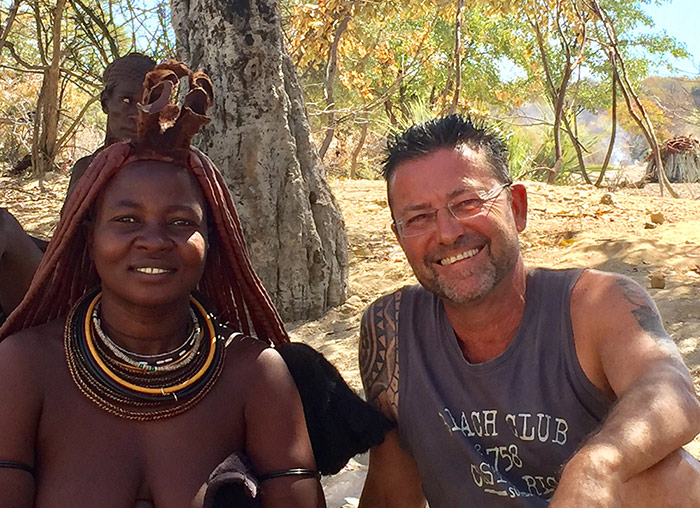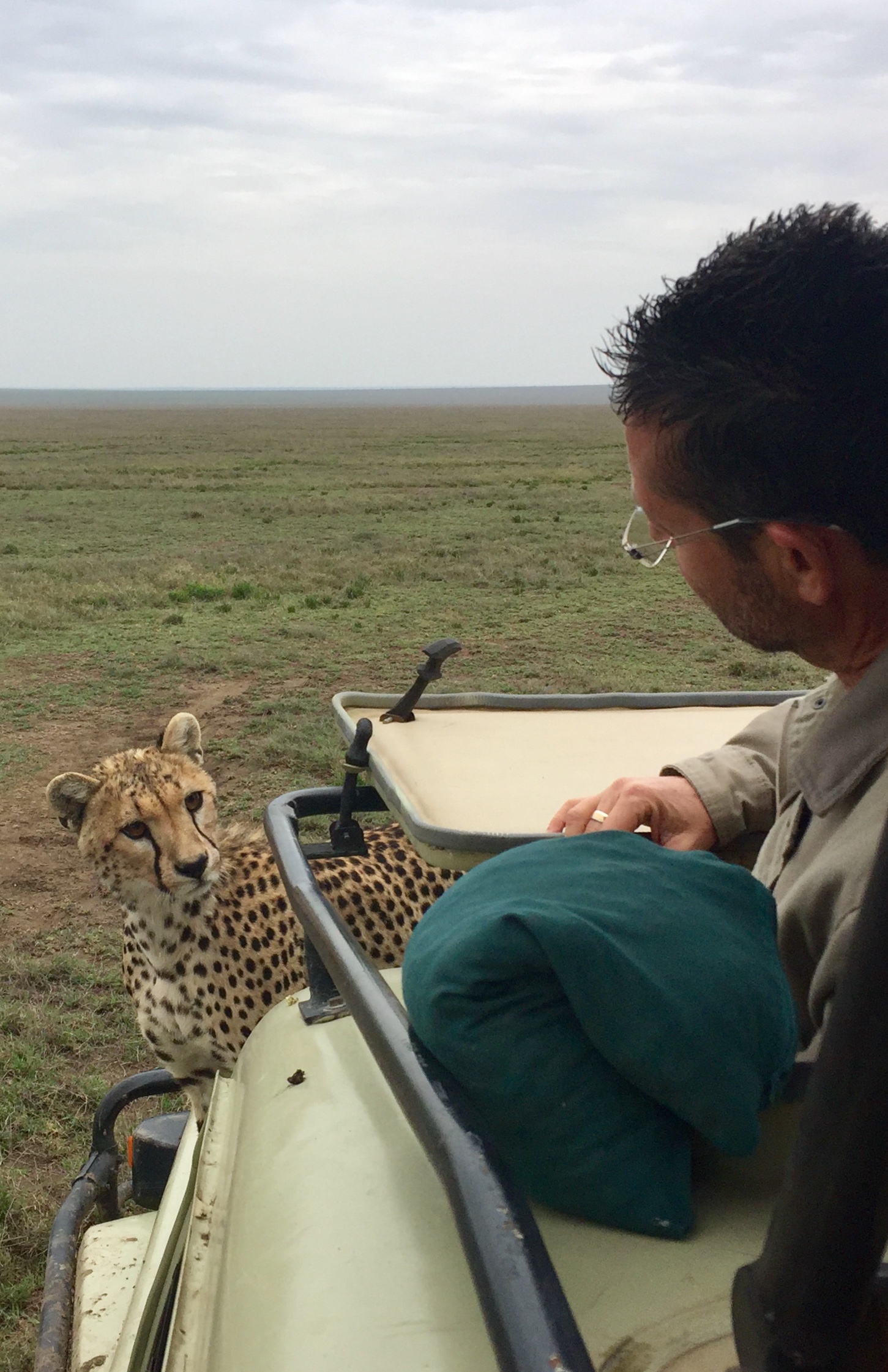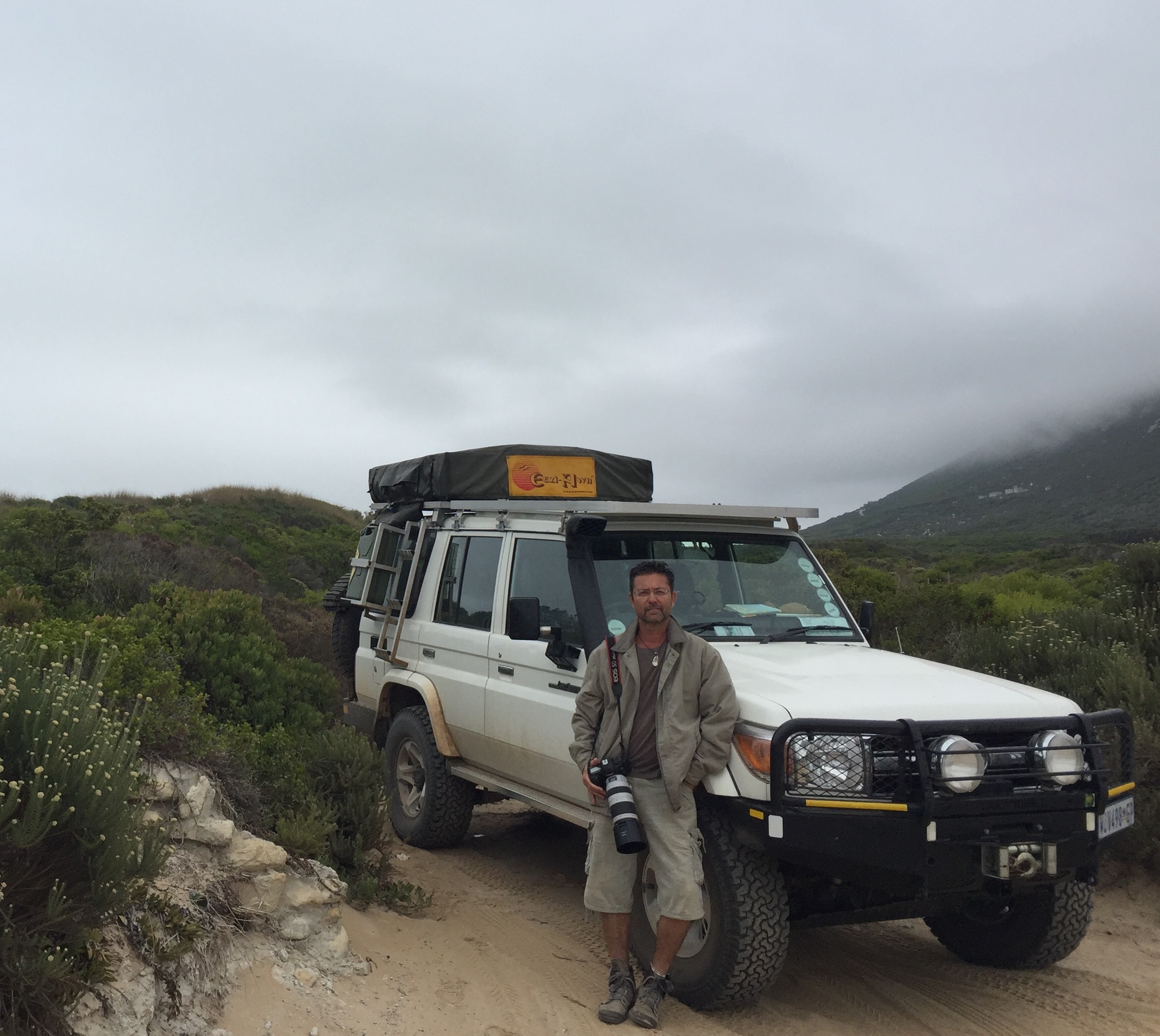ABOUT ME
I am an Israeli photographer, at my best being as far from modern civilization as possible and close to nature as I can. In Africa, with the people of ancient traditions and wild animals that walk the earth for millions of years, I find my peace of mind and my greatest source of creativity.
ABOUT ME
I am an Israeli photographer, at my best being as far from modern civilization as possible and close to nature as I can. In Africa, with the people of ancient traditions and wild animals that walk the earth for millions of years, I find my peace of mind and my greatest source of creativity.
For almost
twenty years
and same number of trips to Namibia, I have photographed, from a very personal point of view, the people of a Himba village, located in a remote and isolated region of the country, near the Angolan border. The tribes’ people are one of the few people in Africa still zealously keeping their ancient traditions alive.
My camera was never used as a tool of anthropological or research-like documentation of the tribes’ way of life, but always as an instrument with which I could express my love for its wonderful people, and my admiration of their inner and physical beauty. They had opened their hearts and huts to me and with time, as we shared deeper and intimate relations, they became my second family.
A photo exhibition
of my work
named “Himba Moments” was displayed in Tel – Aviv. It seemed to me, that the common denominator for most people reactions, was some sort of yearning for that ancient way of life portrayed by the photos, and most of all, a longing for the ability to form intimate relationships with people who seem so distant from us, and yet, eventually, resemble us in so many ways.
A documentary film by the name “Cry Of The Owl” which I created and produced, together with Erez Laufer, a known Israeli documentary film maker, won the Special Juries Award at Jules Verne Adventure Film Festival in Paris (March 2006). This film achieved a rare, intimate, look into the lives of three generations of strong Himba women sharing their desires and fears.
The Himba, as people, face very trying and critical times. Roads are being broken into their land. The AIDS plague is now, more than ever, threatening to enter their villages and extinct their people. Sadly, it seems to me that I have been given a rare privilege, irretraceable a few years from now, to intimately photograph the tribe’s people, at the very last days of their traditional life.
A different project
was done in Southern Ethiopia, near the Sudanese border, where I photographed tribes which inhabit the remote Lower Omo Valley region. In contrary to my intimate relations with the Himba people, here I have to build trust, to create an atmosphere which would allow me to photograph the tribes’ people in a relaxed situation, yet proud and reserved as they naturally are.
“I OMO“, which resulted from this ongoing project, was exhibited on October 2013, in Tel Aviv.
“Intimacy“, my third solo exhibition, which took place in Pesaro, Italy, on October 2014, combined the work with the Himba and the Omo Valley tribes, portraying the different photographic approach and outcome resulting from my different relations with the people of these tribes.
This project was also exhibited in Milan, Italy, on February 2015.
During 2016
I found myself walking
with my cameras along deserted seashores in Israel, photographing human remains and garbage, which polluted the magnificent coastline of the Mediterranean Sea. My love to nature and pristine environment was the energetic source for this project, and my own way to encounter the ugliness resulting from human carelessness, was to photograph the strange esthetics resulting sometimes from human remains left in nature.
My solo exhibition “Filth” was portrayed at Tirosh Art Gallery in Herzlia, Israel, on December 2016.
Coming exhibition will sum fifteen years of wildlife photography in Africa.




For almost
twenty years
and same number of trips to Namibia, I have photographed, from a very personal point of view, the people of a Himba village, located in a remote and isolated region of the country, near the Angolan border. The tribes’ people are one of the few people in Africa still zealously keeping their ancient traditions alive.
My camera was never used as a tool of anthropological or research-like documentation of the tribes’ way of life, but always as an instrument with which I could express my love for its wonderful people, and my admiration of their inner and physical beauty. They had opened their hearts and huts to me and with time, as we shared deeper and intimate relations, they became my second family.

A photo exhibition of my work
named “Himba Moments” was displayed in Tel – Aviv. It seemed to me, that the common denominator for most people reactions, was some sort of yearning for that ancient way of life portrayed by the photos, and most of all, a longing for the ability to form intimate relationships with people who seem so distant from us, and yet, eventually, resemble us in so many ways.
A documentary film by the name “Cry Of The Owl” which I created and produced, together with Erez Laufer, a known Israeli documentary film maker, won the Special Juries Award at Jules Verne Adventure Film Festival in Paris (March 2006). This film achieved a rare, intimate, look into the lives of three generations of strong Himba women sharing their desires and fears.
The Himba, as people, face very trying and critical times. Roads are being broken into their land. The AIDS plague is now, more than ever, threatening to enter their villages and extinct their people. Sadly, it seems to me that I have been given a rare privilege, irretraceable a few years from now, to intimately photograph the tribe’s people, at the very last days of their traditional life.
A different project
was done in Southern Ethiopia, near the Sudanese border, where I photographed tribes which inhabit the remote Lower Omo Valley region. In contrary to my intimate relations with the Himba people, here I have to build trust, to create an atmosphere which would allow me to photograph the tribes’ people in a relaxed situation, yet proud and reserved as they naturally are.
“I OMO“, which resulted from this ongoing project, was exhibited on October 2013, in Tel Aviv.
“Intimacy“, my third solo exhibition, which took place in Pesaro, Italy, on October 2014, combined the work with the Himba and the Omo Valley tribes, portraying the different photographic approach and outcome resulting from my different relations with the people of these tribes.
This project was also exhibited in Milan, Italy, on February 2015.
During 2016 I found myself walking
with my cameras along deserted seashores in Israel, photographing human remains and garbage, which polluted the magnificent coastline of the Mediterranean Sea. My love to nature and pristine environment was the energetic source for this project, and my own way to encounter the ugliness resulting from human carelessness, was to photograph the strange esthetics resulting sometimes from human remains left in nature.
My solo exhibition “Filth” was portrayed at Tirosh Art Gallery in Herzlia, Israel, on December 2016.
Coming exhibition will sum fifteen years of wildlife photography in Africa.



Copyright © 2019 Dori Caspi. All rights reserved.
WEBSITE BY SIVAN PERETS
